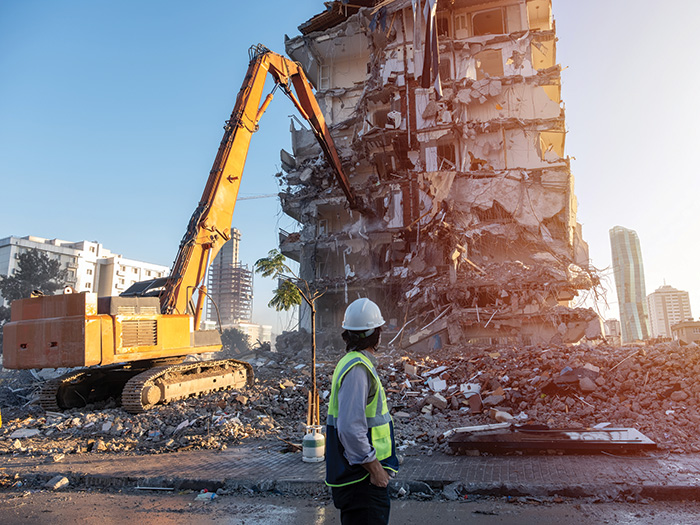Turkey’s Earthquake Disaster Was Preventable — By Insurers

This piece was originally published on Feb. 13, 2023 on Insurance Thought Leadership’s website. With permission, it has been republished here.
The Turkish earthquake’s death toll is staggering: As I write this, more than 45,000 people are known to have died, and the actual total will be much higher.
This number didn’t need to be nearly so high, even though the earthquake and its aftershocks were massive. Tens of thousands of people should still be walking this Earth — shaken up but very much alive.
The blame falls squarely on contractors who constructed shoddy buildings and on all those who falsely sold companies and individuals on the earthquake-resistant qualities of the spaces they were buying or renting.
Blame also belongs to those government officials who failed to spot and publicize the problems that caused entire blocks to collapse even though buildings were supposedly built to modern standards in an area known to be vulnerable to earthquakes.
But I do think insurers can help prevent future disasters. It won’t be easy. It will require finding a way to share the industry’s evaluation of risks in ways that go beyond the narrow confines of a policy, and that range beyond the one-year time frame of the normal insurance contract.
But it’s worth a try.
I’ve had occasion to think about earthquakes and building standards ever since my search for a new office as the Wall Street Journal’s Mexico City bureau chief in 1994. Memories were still fresh from the 1985 earthquake that leveled buildings throughout the city and killed 10,000 people. So I wasn’t just trying to find more space as I hoped to consolidate operations in Mexico; I was looking to secure safety in the face of earthquakes, and I got quite an education on just how much force buildings can withstand.
My problem boiled down to two issues: information and incentives. Those two issues, which also confront other buyers looking to locate in earthquake zones, impede the broader desire to keep earthquakes from causing damage and claiming lives.
The information issue was simple: Others had it, and I didn’t. Those who constructed the buildings I visited certainly knew what standards they had or hadn’t met. Government inspectors did too.
But while I could look at brochures and dig into government reports, I still couldn’t know how a building would perform once a major quake starting rolling through the drained lake bed that Mexico City is built on.
The agents for those builders also didn’t have any incentive to be open with me about an office’s resilience. They just wanted to make a sale.
I’m not necessarily saying they were dishonest, but they had every reason to gloss over any imperfections, just as the builders had incentives to keep costs low during construction. Neither did government inspectors’ incentives line up with mine or with those of society at large. They produce their reports for decision-makers in the bureaucracy, not the public, so they use obscure language and don’t have a very good way of informing the public about the relative safety of buildings.
And — let’s be frank — inspectors aren’t always as pure as the driven snow in a political culture like Mexico’s in the mid-1990s. Bribes were known to happen.
Here’s where insurers come in.
They have both the right information and the right incentives. Not only could they help an individual like me circa 1994 but they can also educate a whole populace about risks in ways that could greatly limit the devastation from future earthquakes.
As I said, it won’t be easy. Yes, underwriters have all the data they need on areas such as Mexico City or the recently devastated region along the Turkish-Syrian border. Insurers also have accurate data on all the buildings whose owners or renters they underwrite. And insurers have reason to want to help clients avoid losses.
The biggest problem is that the decision to rent or buy tends to happen before insurance enters the equation. In addition, the cost of insurance is typically reflected in one-year increments as policies come up for renewal.
But what if insurers in Turkey had warned prospective occupants a decade ago that certain buildings were not, in fact, built to modern standards for withstanding earthquakes, despite what the owners’ agents claimed? What if insurers had also said that the risks would increase each year, just like the tension where tectonic plates cross? What if the insurers had put a hefty price tag on those increasing risks, showing prospective occupants that they wouldn’t save nearly as much as they’d hoped by moving into a building constructed to a subpar standard? And what if those insurance conversations had happened before the lease or mortgage was signed, rather than afterward?
How many occupants would have been dissuaded (and survived)? How many builders would have retrofitted offices, or at least adhered to higher standards in future construction?
While I realize a lot has to happen between my noodling on earthquakes and broad societal impact, I’m hoping that we can change the timing and nature of conversations about insurance and blunt at least some of the effects of earthquakes in the years to come. &










